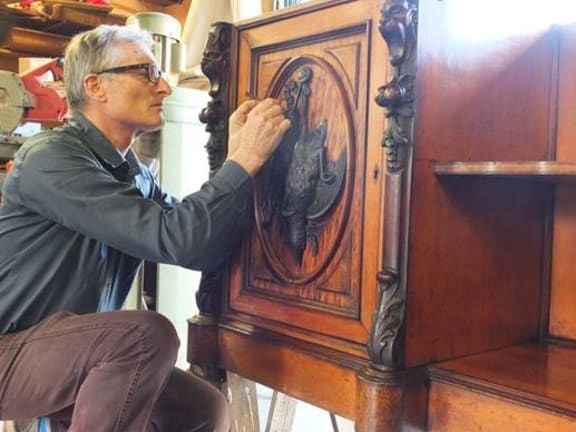

William restoring th William White Sideboard
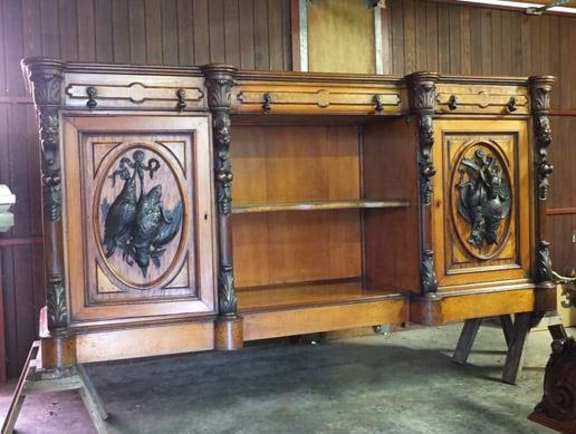

This is the base to the William White sideboard during restoration. Made in Auckland ca1872 in mottled kauri, cedar and mahogany. This is now in Te Papa.
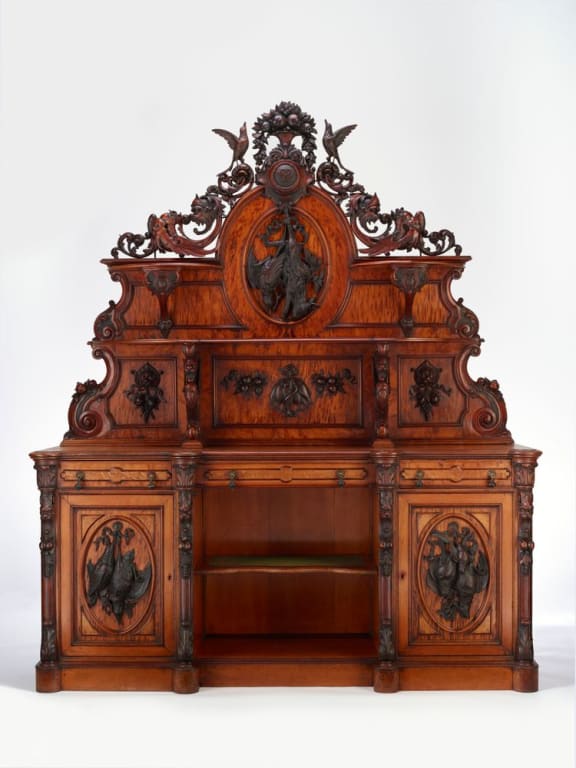

William White Sideboard - Image courtesy of Te Papa
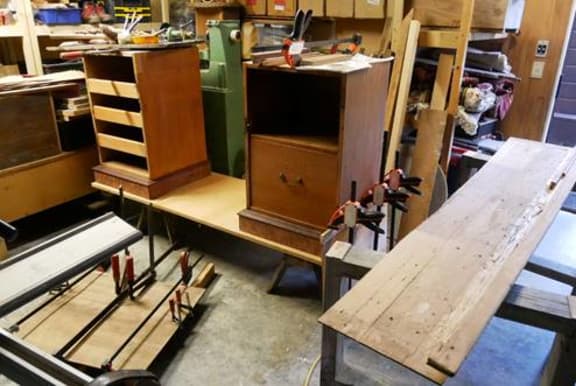

William's lockdown project during restoration
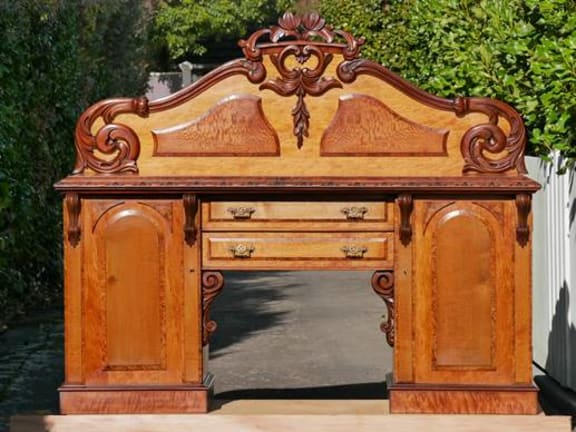

After six weeks during the lockdown period, the Christchurch-made kauri, rewarewa, totara and cedar sideboard has been returned to its original 1870 appearance
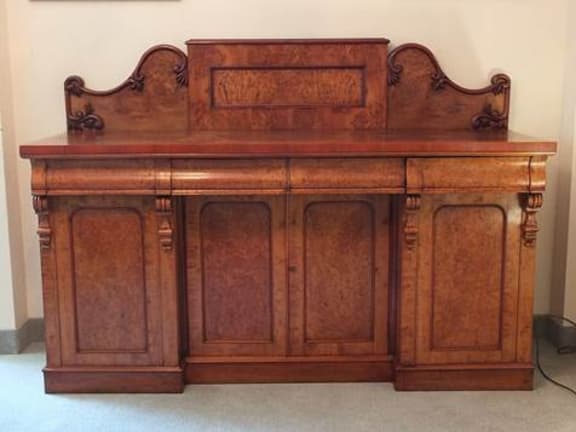

A Totara sideboard by James and Samuel Johnson made in Nelson (found badly damaged in NSW and restored in September 2017)
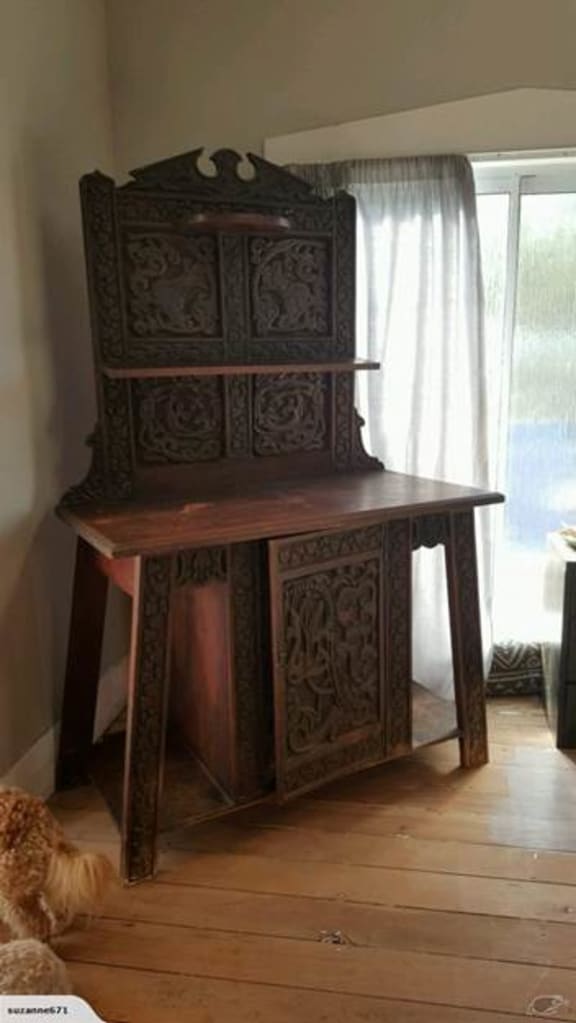

A carved hall stand before restoration
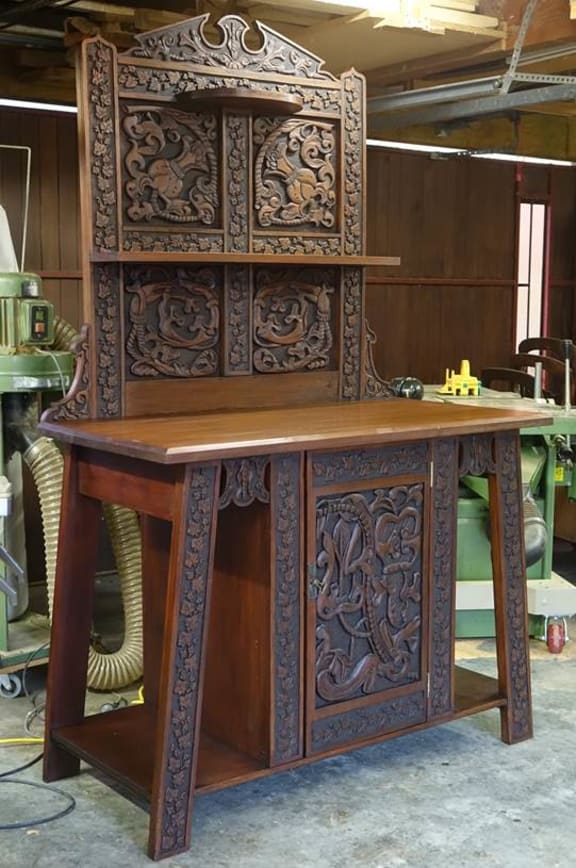

Arts & Crafts Hall Cabinet in Totara and Kauri, made ca.1895'
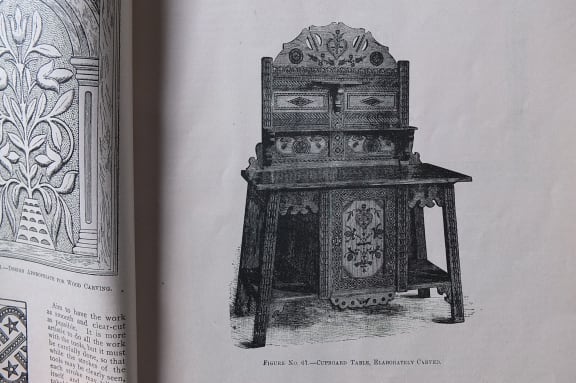

This is the original pattern published in 1893 that was the basis of the totara and kauri 'Hall Cabinet'
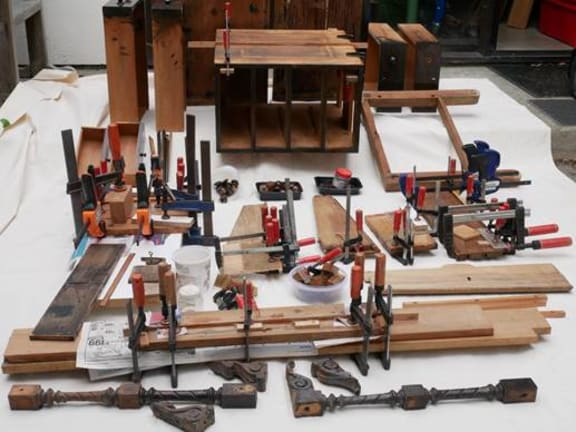

This is the Davenport desk in pieces at the beginning of restoration in March 2020
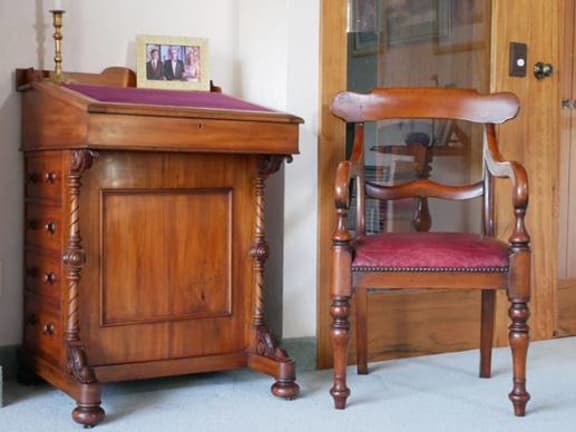

A small desk or more correctly Davenport. It is rimu amde ca.1865 in the 'Elizabethan' style and once owned by Rev. Vicesimus Lush when he was vicar of Howick [and then later Thames goldfields). The chair on the right is a kauri 'Trafalgar or Grecian carver' I rescued from a 'restorer' in Auckland about 35 years ago. He had done an enormous amount of damage to it and it was quite challenging to put right.
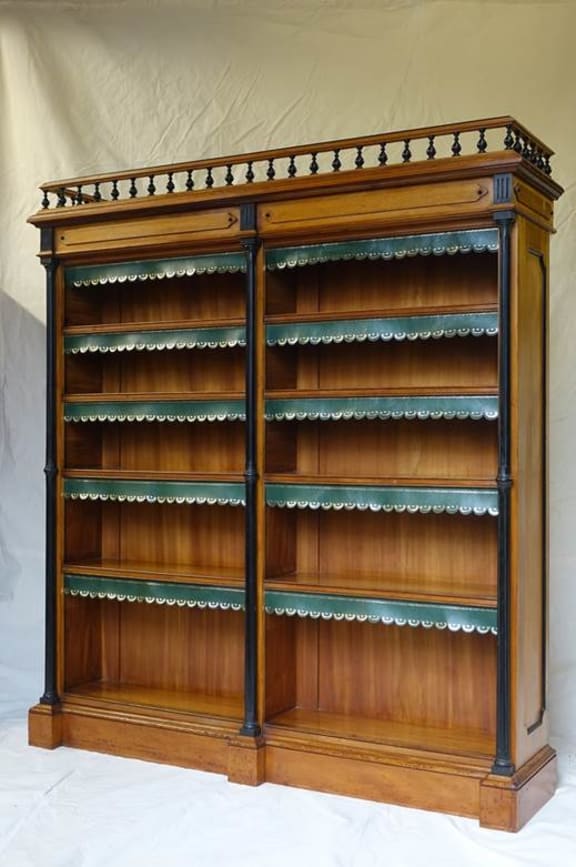

The Larnach Castle Gothic style bookcase in rimu, kauri, rewarewa and ebony, ca1875 following restoration". It was originally found in a New Brighton second-hand shop.
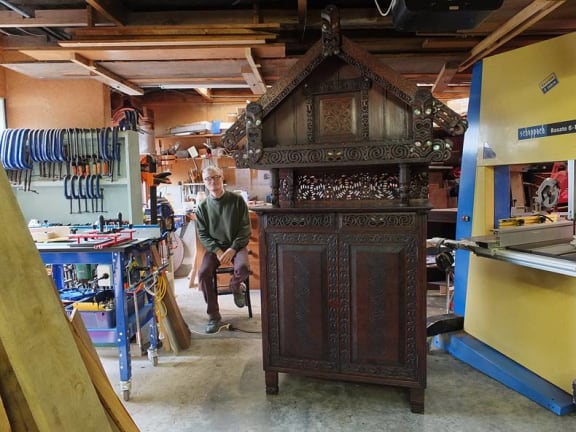

William Cottrell and the Pataka Cabinet
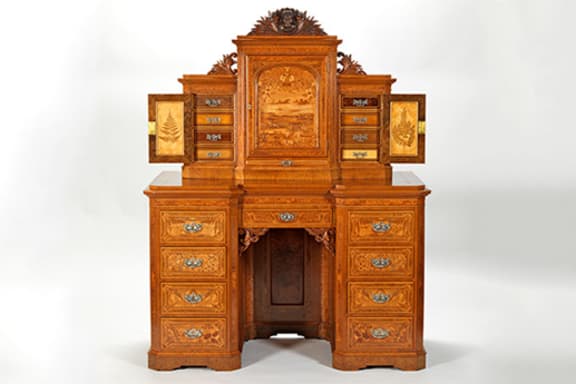

This is the Baden-Powell Desk made by William Seuffert (Auckland, completed after 3 years in 1903) now in the Auckland Museum.
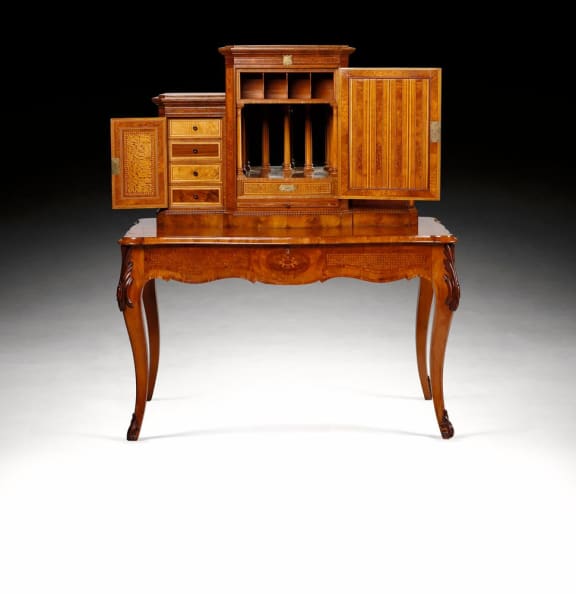

The Joseph Hooker Secretaire by Anton Seuffert
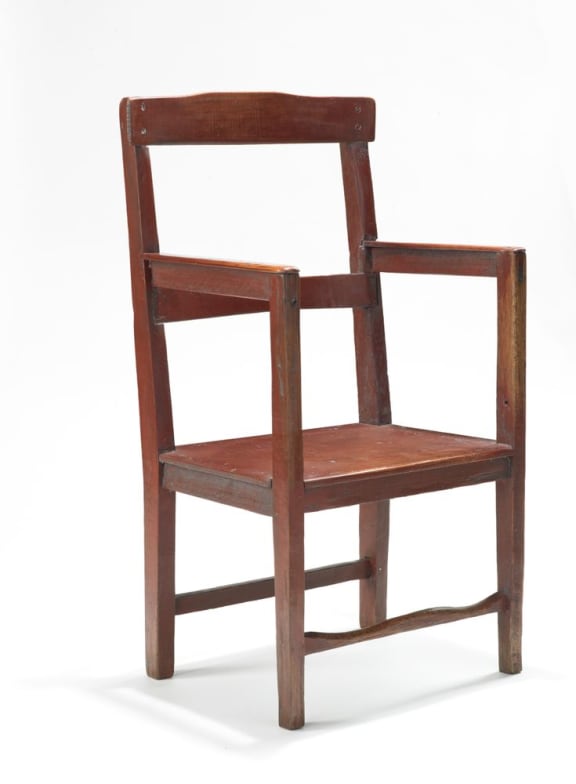

This generic William IV-style chair came from South Canterbury and is an example of a settler-made armchair using scrap materials.
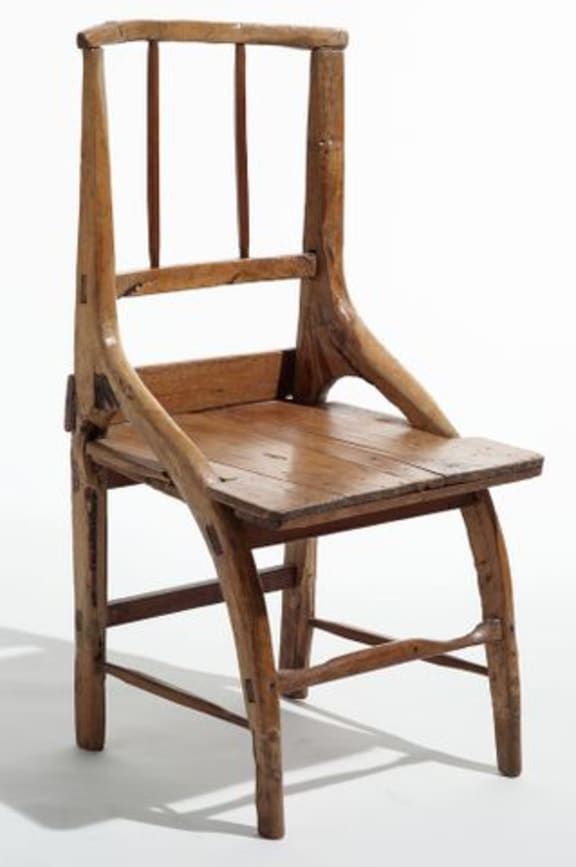

This is the rustic chair made of kahikatea, beech branches and packing crate parts found on the West Coast
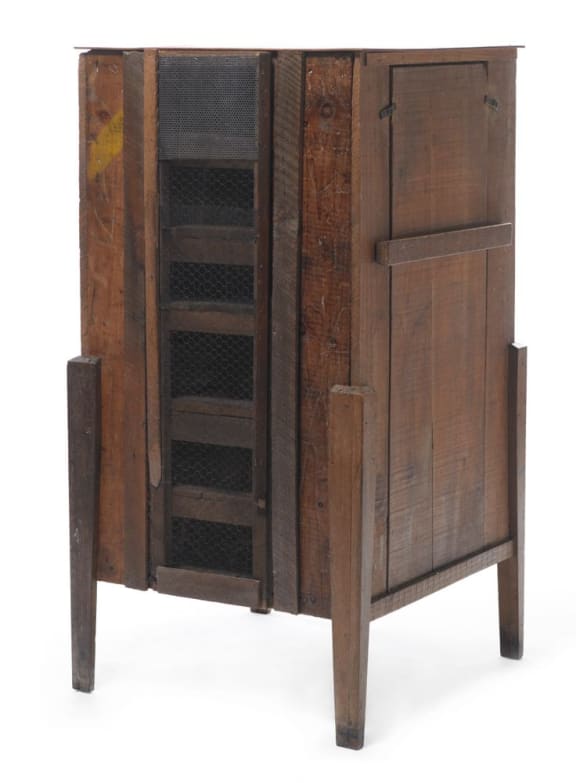

This is the Depression era food safe I also refer to made out of old boxes and salvaged/reused materials. Found in Sandringham, Auckland.
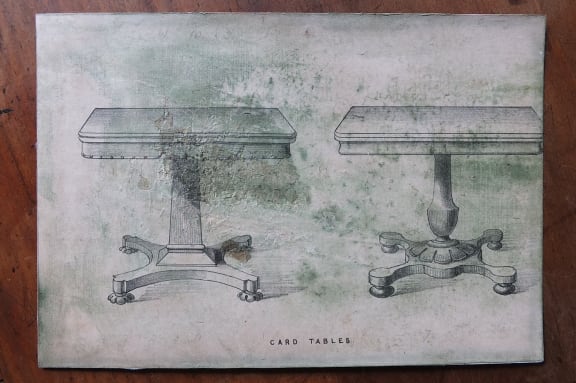

Patterns found in the lining of a small inlaid box over 20 years ago.
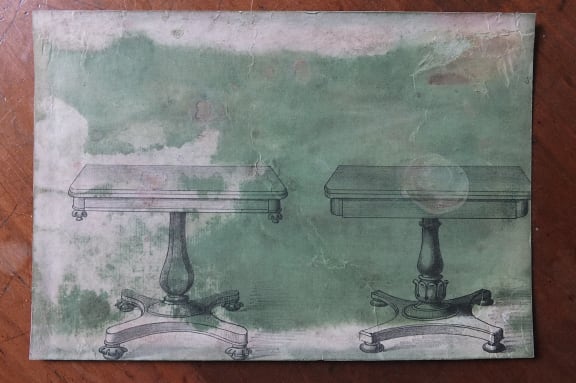

These patterns were found in the lining of a small inlaid box I restored about 20 years ago. The box was made by William Seuffert (son of Anton who made the Hooker Secretaire above) in about 1900 but the patterns came from Thomas King's (1835) Cabinet Maker's Sketch Book.
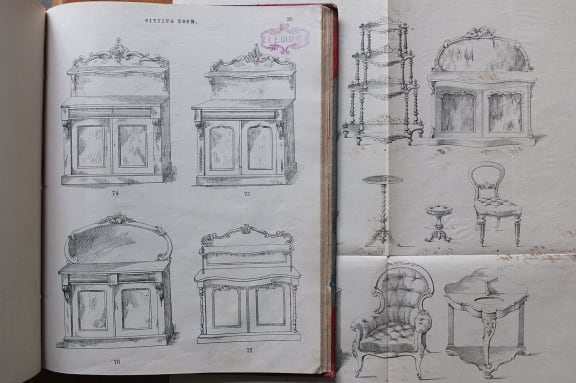

This is the Dunedin pattern book (NZ's oldest) printed in 1875 for the firm Craig & Gillies showing chiffoniers in the popular rococo-style. Craig and Gillies had actually illegally reprinted their pattern book mostly from London furniture makers Jenks & Holt's (1869) designs.
While lockdown was a period of downtime for some, woodworker and restorer William Cottrell was hard at work restoring a native wood sideboard from 19th century Aotearoa. It's just as well he had seven weeks, it's no small task restoring 19th century wooden furniture, but it's an effort that has become a lifelong passion for William.
He's spent the last few decades finding and returning hundreds of native wood pieces to life, many of which now grace government buildings and museums. There are over 70 in Te Papa alone and he's currently writing a book for Te Papa Press about the stories of our furniture, and the journey of restoration.













































